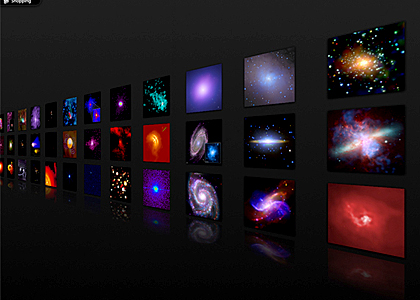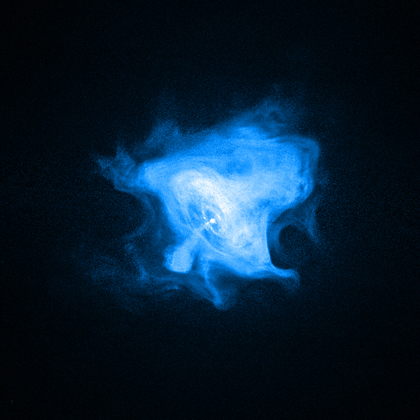Huge Russian Dolls Surrounding a Galaxy
Submitted by chandra on Tue, 2008-11-18 11:35M84: A massive elliptical galaxy about 55 million light years away in the Virgo Cluster. More at http://chandra.harvard.edu/photo/2008/m84/
-Kim Arcand, CXC
M84: A massive elliptical galaxy about 55 million light years away in the Virgo Cluster. More at http://chandra.harvard.edu/photo/2008/m84/
-Kim Arcand, CXC
While we like to focus on the current excitement in X-ray astronomy, sometimes it's good to look back. Last week marked the 30th anniversary of the launch of the Einstein Observatory. Back on November 13, 1978, the High Energy Astrophysics Observatory 2 was launched on Atlas-Centaur booster rocket. Shortly afterward, the satellite was renamed in honor of that little known scientist, Albert Einstein. While HEAO-2 is catchy, we think Einstein is a little easier off the tongue.
If you haven't noticed by now, we like new things around here. In fact, it almost pains us to see something out there that's fun and exciting that we’re not a part of. So to remedy that, we just try to get Chandra involved with everything we can. The latest, in our humble opinion, is very cool.


Crab Nebula: A supernova remnant and pulsar located 6000 light years from Earth in the constellation of Taurus. More at http://chandra.harvard.edu/photo/2008/crab/
As many of this blog's readers may know, Chandra is NASA's flagship X-ray mission but it's not the only major X-ray telescope in orbit. The other one is XMM-Newton, which was launched by the European Space Agency (ESA) just five months after Chandra in 1999. The great thing about Chandra and XMM-Newton is that many of their capabilities are complementary. In other words, scientists often use both and can combine the data for even stronger results.
Here at the Chandra X-ray Center, we work hard to make the images that you find on the public website. No, there’s no magic button that we push to make pretty pictures. In fact, there are countless keystrokes, mouse movements, and lots of thinking that go into these images of the cosmos that are fit for public consumption.
Not to give away my age, but I remember not too long ago using film when I took pictures. And then having (gasp!) to get them developed. It was a sad, sad world, but somehow we emerged into our current age of electronic enlightenment.
One of the greatest advantages of digital visualization, in my opinion, is the ability to share, comment on, and arrange images in a myriad of ways. And, of course, Flickr has been highly successful at taking these concepts to a new level.
Fifty years ago this week, on October 1st, the legislation creating the National Aeronautics and Space Administration, or NASA, was enacted. There will likely be a lot of buzz about this anniversary, and rightly so, since it has, among many other things, shaped our understanding of the Universe so dramatically.
The Chandra X-ray Observatory Center web site chandra.harvard.edu has been in existence for over ten years. In that time the Chandra Education & Public Outreach team has worked to improve content delivery, utilize new technologies and attempt to provide a fun, educational experience. Last week, the web group released a major revision that kept the overall basic design, navigation and search principles intact while allowing greater user control in content delivery. The new graphical design builds on existing elements but lends a more modern look.